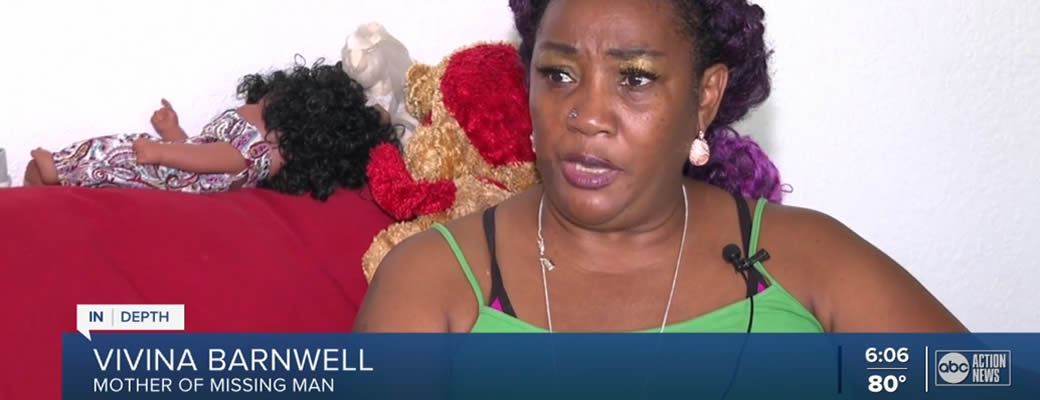Missing in the media: Gender and racial disparities in news coverage
ABC Action News
Anthony Hill
October 28, 2021
TAMPA, Fla. — Tens of thousands of people of color go missing every year in the United States, often without any coverage of their disappearance in newspapers, magazines or on TV. While other missing people — Gabby Petito, Laci Peterson and Natalee Holloway, for example — become household names.
ABC Action News in-depth reporter Anthony Hill is uncovering the reasons behind this disparity and how we in the media can do better.
It’s one of the worst things you could hear: a family member or friend has gone missing. Many people turn to us — in the media — to get the word out because every second counts, but many men and people of color don’t get equitable coverage when it comes to reporting on missing persons. This is not about dishonoring anyone who goes missing. Rather, this is a critique of us, in the media, and a look at how we can do better by the communities we serve.
“We reported him missing in 2016 and from that day forward our lives were not the same,” said Vivina Barnwell who has been looking for her adult son, Peiarre, for years. He went missing in New Port Richey in 2016. Vivina says she would like to see more representation in the media on missing persons of color. “I just noticed that the media gets quiet when you speak on an African American, brown-complected person. They get quiet, but when it comes to the White color, they speak up.”
Peiarre is among the hundreds of thousands of people that go missing every year, but by December of 2020, the FBI had about 90,000 active missing persons cases. About 40% of those cases are of people of color. However, that number is likely much higher because when you take a closer look, the FBI doesn’t differentiate between White Americans and Latinos.
“I wanted to look at the second stage, which was not just who received news coverage, but also how much news coverage people receive,” said Zach Sommers. Sommers is a Criminologist and in 2016, he published a study where for one year, he looked at every article reporting a missing person on CNN, Chicago Tribune, The Atlanta Journal-Constitution and the Minneapolis Star Tribune. He then looked at the demographics of who appeared in those stories and compared them to the FBI’s list of missing persons. In particular, I found that White girls and White women were dramatically over-represented.” He says White women accounted for about a third of the people who went missing but accounted for about half of all of the articles written about missing persons.
“The motivation to keep going are these families that are desperate. They don’t know what to do. They’re not getting the assistance from law enforcement or the media,” said Natalie Wilson, co-founder of the Black and Missing Foundation. It was founded in 2008 to bring attention to missing persons of color by getting the word out to local and national media partners across the country.
It’s important to note the culpability law enforcement also shares in the disparity of coverage for missing persons of color because law enforcement chooses which cases they prioritize and devote resources to solve.
“We haven’t really been getting any help at all and New Port Richey doesn’t even answer their phone when I call to find out if there’s been any updates at all,” said Barnwell, Peiarre’s mother.
Natalie says they believe the two main reasons for the disparity in coverage of missing persons of color is because law enforcement tends to classify missing children of color as runaways.. and adults of color are sometimes thought to have been involved in some type of criminal activity, resulting in their disappearance. “It’s a lot of work, but it’s something that we are equipped to do,” said Wilson.
“To be entirely honest, all of us can probably continue to do better,” said Dr. Jeff Neely, professor of journalism at the University of Tampa. He’s teaching the next generation of journalists to be more intentional in how they cover the news. “We talk quite a bit in my classes about the idea that diversity of coverage and diversity of content should not be mere tokenism.” He says he teaches his students the importance of getting out and reporting on stories in different communities.
Doris Truong is with the Poynter Institute for Media Studies. She says, having more diversity in newsrooms is one solution to doing a better job when people of color go missing. “You might not necessarily have a wide cross-section of representation on your staff. So, then it’s important to think about what is not well represented within our staff. How can we still be responsible for thinking about those perspectives.”
Photo credit: ABC Action News

